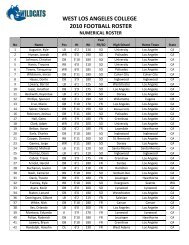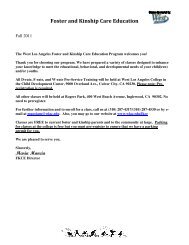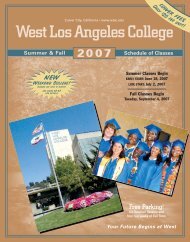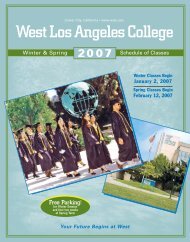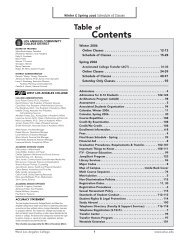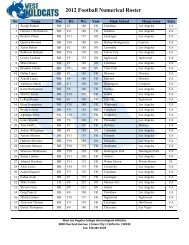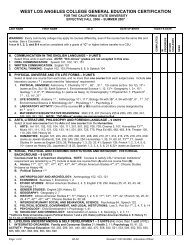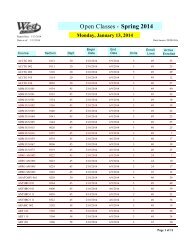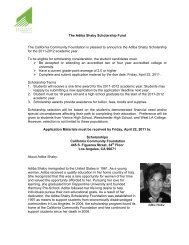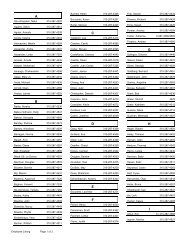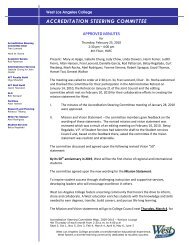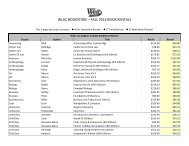MATH 227 STATISTICS FINAL EXAM - West Los Angeles College
MATH 227 STATISTICS FINAL EXAM - West Los Angeles College
MATH 227 STATISTICS FINAL EXAM - West Los Angeles College
You also want an ePaper? Increase the reach of your titles
YUMPU automatically turns print PDFs into web optimized ePapers that Google loves.
For problems 95 through 97, consider the following MINITAB output for analysis of a<br />
bivariate quantitative data set. Note here that the variable Hours is being used to predict<br />
the variable Wear.<br />
Regression Analysis<br />
The regression equation is<br />
Wear = 0.0028 + 0.00657 Hours<br />
Predictor Coef Stdev t-ratio p<br />
Hours 0.0065723 0.0001460 45.02 0.000<br />
R-sq = 99.1%<br />
95. For this analysis, the coefficient of determination is<br />
a) .991 b) .995 c) .00657 d) .0028 e) none of these<br />
96. For this bivariate data set, the approximate value of the correlation coefficient is<br />
a) .991 b).995 c) .00657 d) -0.991 e) none of these<br />
97. The output indicates that Hours is a useful linear predictor of Wear. (using a .05 level of<br />
significance.)<br />
a) true b) false c) can't tell with the output provided<br />
_________________________________________________________________________<br />
98. The types of discrete random variables discussed in class were:<br />
a) binomial<br />
b) geometric<br />
c) poisson<br />
d) all of the above<br />
e) none of these<br />
99. Which of the following is a measure of the variability of a distribution<br />
a. Skewness b. Median c. Standard deviation d. z-score<br />
100. A type I error is made by<br />
a. rejecting Ho when it is true.<br />
b. rejecting Ho when it is false<br />
c. failing to reject Ho when it is true<br />
d. failing to reject Ho when it is false<br />
16



